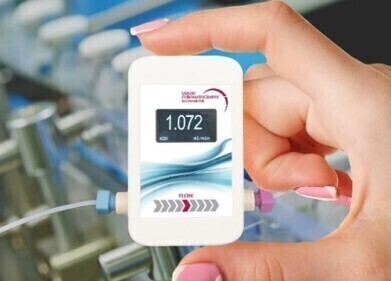HPLC, UHPLC
Frankincense — Chromatography Investigates Christmas’ Perfume
Nov 20 2015
As Christmas approaches — well the shops have been decorated with baubles and lights —people’s thoughts turn to their families, what’s on television, and the traditions that are passed on through generations. One tradition that celebrates the meaning of Christmas — and is played out in schools up and down the land — is the Nativity story.
Gold, frankincense and myrrh were the gifts presented to the baby Jesus by the three wise men in the traditional telling of the Nativity story. These items were traditionally the gifts given to kings in ancient times —gold because of its value as a precious metal, frankincense as a perfume and myrrh as a special anointing oil. But could the wise men have been even wiser than we ever thought.
From nativity to arthritis
Frankincense has been used in Chinese medicine for over two thousand years for the treatment of ailments that include inflammatory diseases like arthritis. Recently its use has been investigated by pharmaceutical companies looking for natural bioactive ingredients to use in medicines for an ever increasing and aging population.
But are all frankincense samples the same? There are three main types of frankincense that are recognised by the various pharmacopeia — the bibles that drug companies must consult when they are looking for ingredients. In the US, European and Indian Pharmacopeia’s, Boswellia serrata is the only recognised source of frankincense, whilst the other two versions of frankincense, B. papyrifera and B. sacra are listed in the Chinese pharmacopeia.
A recent study published in the Journal of Separation Science — ‘Combination of quantitative analysis and chemometric analysis for the quality evaluation of three different frankincenses by ultra high performance liquid chromatography and quadrupole time of ?ight mass spectrometry’ — discusses the use of chromatography to compare different frankincense samples and to determine a quantitative analytical method for six key frankincense components.
UHPLC picks the peaks
The team analysed 55 different samples from four different regions of the world using ultra high performance liquid chromatography (UHPLC). Offering better efficiency and throughput than standard HPLC, UHPLC is used in many pharmaceutical applications as discussed in the article, New Innovations in UHPLC and multidimensional Workflows for the Characterisation of Bio-Therapeutics in Chromatography Today.
The keys components in frankincense that are associated therapeutically with reducing inflammation are known as Boswellic acids (BAs). Various different BAs are currently used clinically to treat inflammatory conditions including asthma and arthritis. Knowing the BA component variation between the various frankincense samples is key to getting an understanding of the differences between the samples of Boswellia.
The team report that although they couldn’t identify an individual sample as belonging to a particular type of frankincense, the average content profiles contain differences. Some of the samples tested had levels of certain BAs that did not meet the standards in some of the pharmacopeia.
Make sure the frankincense presented to Baby Jesus in your Nativity play is in the pharmacopeia.
Image by geralt
Digital Edition
Chromatography Today - Buyers' Guide 2022
October 2023
In This Edition Modern & Practical Applications - Accelerating ADC Development with Mass Spectrometry - Implementing High-Resolution Ion Mobility into Peptide Mapping Workflows Chromatogr...
View all digital editions
Events
Jan 20 2025 Amsterdam, Netherlands
Feb 03 2025 Dubai, UAE
Feb 05 2025 Guangzhou, China
Mar 01 2025 Boston, MA, USA
Mar 04 2025 Berlin, Germany



.jpg)








